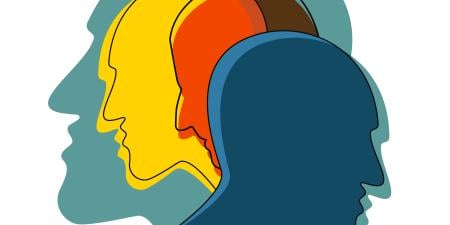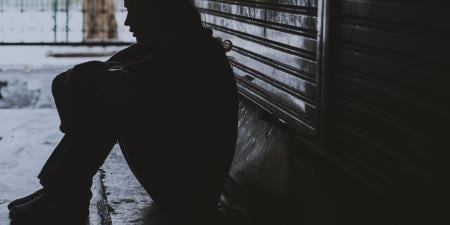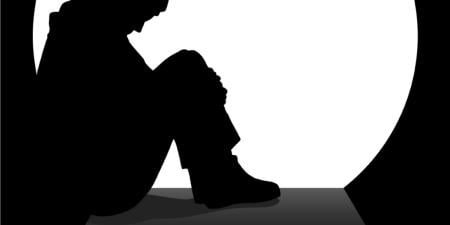Perhaps it is the culture of many medical schools that encourages students to specialize in more "prestigious" and lucrative areas of medicine rather than pursue careers of service to indigent or homeless populations [1]. The frustrations of working in indigent health care often catalyze discouragement for continuing in such settings and worsen attitudes toward this population during the course of medical education [1-4]. These findings accord with reports that students become less humanitarian, more cynical, and more focused on career and practice goals during their training [5]. We believed that introducing students to care for homeless patients in a supervised experience in the Houston Outreach Medicine Education & Social Services (HOMES) Clinic would help reverse their negative attitudes toward homeless patients.
There are indications that adverse caregiver attitudes and a lack of understanding contribute to reduced access to and quality of care for the homeless [6-9]. These counterproductive qualities most likely stem from training that did not adequately prepare students and physicians to manage their own reactions to this population. Homeless patients who encounter these attitudes and behaviors seek health care less frequently, which often preempts early treatment and leads to late visits to emergency departments [7]. Negative attitudes perceived by patients also increase their sense of alienation, stigmatization, and despair. The result is a decrease in the effectiveness of counseling, treatment recommendations, and spiritual succor--the core of a physician's therapeutic tools [10, 11].
Investigators in the United Kingdom demonstrated that, as in the United States, student attitudes were more negative at the end of medical school than the beginning. Semi-structured interviews of the students with the greatest changes in scores indicated that negative clinical experiences and professional socialization (including role models) were the determining influences [2]. Physicians, of course, share the attitudes and prejudices of their community and society, and the intertwining of negative attitudes toward the homeless sustains the ethos in both groups [11].
The quality of medical education depends on how the information is transferred and how professional socialization is experienced. Hence, it is critical that the students' ethics, attitudes, and values are cultivated to guide their development as physicians who can treat all patients equitably. Socioeconomic background, serious mental illness, substance abuse, personality disorder, chronic pain, abuse, abject poverty, and low social and intellectual functioning should not disrupt the patient-physician relationship.
Students who opt for subspecialties score significantly lower on the empathy scale than students who choose family practice, internal medicine, or pediatrics [12]. Another British study examined the attitudes of students interested in general practice (U.S. family medicine) when they were most likely to interact with homeless and low-income individuals seeking primary care services. The attitudes of these students, mentored by general practitioners, were more negative at the end of their medical education than at the beginning, a change that was attributed to the personal experiences they had with general practitioners [13]. Results starkly illustrate the influence of physicians' attitudes and how generationally transmitted they can be.
HOMES Clinic
Medical students' primary exposure to the homeless health care system in Houston is a free, student-run, primary care clinic initiated and organized under the charter of the Healthcare for the Homeless--Houston (HHH). From its beginnings, HHH has been intertwined with the development of the HOMES Clinic. The HOMES Clinic creates an experience different from the daily workings of a traditional clinic in that it is managed largely by medical students. It involves students from Baylor College of Medicine (BCM), the University of Texas (UT) School of Medicine, UT School of Public Health, and University of Houston (UH) College of Pharmacy--working together interprofessionally. Recently, the UH College of Social Work was invited to provide more comprehensive social-service referrals to our patients.
The clinic, opened in 2001, has evolved over the years. It operates on Sundays and is manned by four-member teams of two first-year medical students and a pharmacy or public health student, and led by a third-year BCM student participating in the Longitudinal Ambulatory Care Experience elective for homeless health care. The teams evaluate their patients during the day and present their reports to a medical-faculty preceptor who guides the treatment and emphasizes the social and economic aspects of health care, thus exposing students to a bio-psycho-social model of medical treatment [14].
Our program is designed to foster students' self-efficacy and encourage leadership. We emulate the social component of the University of California San Diego curriculum, where students share a meal with homeless persons and conclude each clinical session by reflecting with their peers, processing, communicating, and resolving the strong, emotionally challenging elements of this work.
Health Professionals' Attitudes Toward the Homeless Inventory
If attitudes are to improve, they must be quantified so that the effect of interventions can be gauged and evaluated. We used several studies that accurately and reliably evaluate the perceptions of public and health care professionals. The first was the Attitudes Toward Homelessness Inventory (ATHI), which demonstrates differences in scores associated with previous experience with the homeless, personal experiences of being homeless, and any changes in attitudes over time [15].
Following publication of the ATHI, a survey measure designed specifically for medical students, the Attitudes Toward the Homeless Questionnaire (ATHQ), was published in the United Kingdom. ATHQ was derived from in-depth interviews with general practitioners. It was first used to show that second-year students who participated in a health and homelessness elective had more positive attitudes toward the indigent population than their peers in other modules [16]. Researchers later, however, noted a decrease in the positive attitudes of these medical students during their progression from the basic sciences through their clinical years [2].
To meet the need for a similar survey with terminology appropriate for the U.S. system of care, faculty and students at BMC designed, validated, and published the Health Professionals' Attitudes Toward the Homeless Inventory (HPATHI). This survey is considered an indirect measure of self-efficacy for students. Those who have learned how to be effective with the homeless naturally have better attitudes, while students with some experience but minimal skills are frustrated and have poorer attitudes. As in the U.K. survey, the HPATHI found that respondents with some experience had a less favorable attitude toward homeless people than those with no experience. We believe this finding represents the phenomenon of counter-transference in which a clinician projects his or her feelings onto the patient--a patient that the physician is unable to help is judged to be "difficult" or a poor historian.
Responses to the survey components were arrayed along three dimensions: personal advocacy, social advocacy, and cynicism. Comparing scores across groups showed there was no significant difference between preclinical medical students and primary care physicians, but those with more than 1 year of experience working with the homeless had higher overall attitude scores than health care professionals with less than 1 month [11]. After an initial reduction in positive attitude after slight experience (less than 1 month), more experience led to greater interest and more positive attitudes. Thus, the authors suggested that more direct, well-mentored patient care for the homeless be provided in the medical education curriculum. The next necessary method of measurement is to document change in attitudes over time in a given sample, which was accomplished by comparing changes in survey scores (all validated for reliability and test-retest stability).
In a more recent study, internal-medicine residents were evaluated with the ATHI and ATHQ surveys before and after a 2-week rotation in homeless health care. While both surveys showed a significant change in scores over just 2 weeks, the ATHI revealed a significantly larger (0.53) per-item change--after adjustment for differences in response scales--to 0.13 for the ATHQ [17]. Because the study tested both surveys for overall changes in scores relative to each other and not to a third measure, it was not intended to evaluate true attitudes or make a comparison of construct validities. It did not, however, illustrate that ATHI was the more sensitive tool for detecting changes in attitudes from the beginning to end of an educational program.
We are currently concluding a study that examines these exact elements. In a prospective study, the HPATHI and ATHI are being administered to all participants during a first-year elective and at the beginning and end of a third-year homeless health care rotation at BCM. Differences in scores were assessed across demographics, between first- to third-year students (pre- and post-clinical experience), and from the beginning to end of the third year of medical school. Differences in scores between the HPATHI and ATHI will be examined for sensitivity to changes in attitudes.
At this time, the data seem to support previous findings. Taken prior to their homeless health care rotation, third-year medical students' attitudes toward the homeless appear to be lower than those of first-year students. Also in line with previous findings, students with 1 year or more of service to the homeless have slightly higher scores than those with 1 month or less experience with the population. These findings substantiate factors involved in medical student attitudes toward the homeless and confirm the benefits of providing students with positive experiences with this population. A sample of 20 third-year students who completed surveys before and after their rotation did not show a significant change in attitudes. These data suggest including more direct homeless patient care within the medical education curriculum to foster improvement in attitudes toward this population. Our next step will be to report on the efficacy of the HPATHI instrument as means of assessing students' attitudes and measuring the impact on the educational experience.
Protecting the Interest of the Homeless
Our goal should not be merely to attenuate the "natural" decline of medical-student attitudes toward the homeless. We must enhance and secure the innate interest in the underserved that most students bring to their training. Negative attitudes are most likely attributable to the social stigma of homelessness itself, but they are also an indirect measure of professional maturity and a capacity to be clinically effective in primary care.
Homeless patients, burdened by serious mental illness, substance abuse, multiple-system decompensation, fractured social networks, irregular past treatment, and a mistrust of "the system," are mostly (but not entirely) "difficult patients." Clinician frustrations are common and understandable.
Given these inherent treatment frustrations, we have to ask, why is the focus placed solely on labeling the patient as difficult and not at least partly on the physician? Each physician, or human being for that matter, enters situations with his or her own biases, inabilities, and insecurities that can hinder interpersonal effectiveness. A lack of self-efficacy to deal with the consequences perhaps stems from the failure to openly address within the curriculum the skills needed to remediate these intrapersonal issues.
Our call as educators and mentors is to provide the training and role modeling to equip physicians with the mental and emotional skills to serve patients and deal with their own reactions. Through the examination of attitudes using the HPATHI, we have reached the conclusion that, in addition to clinical experiences, there should be a curriculum of specific skills that address counter-transference and other common challenges. It is important that students have a tangible learning experience. That experience, however, must help inculcate in the student the self-awareness and accountability that successful and caring physicians acquire with experience and maturity.
Conclusion
As educators, we must change the way physicians and other health care professionals are taught. We must design substantial and effective ways of transmitting professional, empathic, and culturally sensitive attitudes that will improve relationships with estranged patient populations. We must remove the barriers to care that negative perceptions create and promote active advocacy. Students need more exposure to the economic, behavioral, social, and environmental determinants of health. Research has shown that these dynamics are best learned through an experienced-based curriculum within a positive, supportive, and rewarding environment and that these can eventually outweigh the negative experiences so common in the current system. Making students better able to serve the "difficult" patient will make them better physicians.
References
- Zinn WM, Sullivan AM, Zotov N, et al. The effect of medical education on primary care orientation: results of two national surveys of students' and residents' perspectives. Acad Med. 2001;76(4):355-365.
-
Masson N, Lester H. The attitudes of medical students towards homeless people: does medical school make a difference? Med Educ. 2003;37(10):869-872.
- Wolf TM, Balson PM, Faucett J, Randall HM. A retrospective study of attitude change during medical education. Med Educ. 1989;23(1):19-23.
- Fasano LA, Muskin PR, Sloan RP. The impact of medical education on students' perceptions of patients. Acad Med. 1993;68(10 Suppl):S43-S45.
-
Sinclair S. Making Doctors: An Institutional Apprenticeship. Oxford: Berg; 1997.
- Ugarriza D, Fallon T. Nurses' attitudes toward homeless women: a barrier to change. Nurs Outlook. 1994;42(1):26-29.
- Lester HE, Bradley C. Barriers to primary healthcare for the homeless. The general practitioner's perspective. Europ J Gen Practice. 2001;7(1):6-12.
- Handel DA, McConnell KJ, Allen H, Lowe RA. Outpatient follow up in today's healthcare environment. Ann Emerg Med. 2007;49(3):288-292.
- Wen CK, Hudak PL, Hwang SW. Homeless people's perceptions of welcomeness and unwelcomeness in healthcare encounters. J Gen Intern Med. 2007;22(7):1011-1017.
-
Elvy A. Access to care. In: Brickner PW, Scharer LK, Conanan B, Elvy A, Savarese M, eds. Health Care of Homeless People. New York, NY: Springer Publishing Company; 1985: 349.
-
Buck D, Monteiro F, Kneuper S, et al. Design and validation of the health professionals' attitudes toward the homeless inventory (HPATHI). BMC Med Educ. 2005;5(1):2.
-
Newton BW, Savidge MA, Barber L. Differences in medical students' empathy. Acad Med. 2000;75(12):1215.
- Henderson E, Berlin A, Fuller J. Attitude of medical students towards general practice and general practitioners. Br J Gen Pract. 2002;52(478):359-363.
- Clark DL, Melillo A, Wallace D, Pierrel S, Buck DS. A multidisciplinary, learner-centered, student-run clinic for the homeless. Fam Med. 2003;35(6):394-397.
- Kingree J, Daves W. Preliminary validation of the attitudes toward homelessness inventory. J Community Psychol. 1997;25(3):265-288.
- Lester HE, Pattison HM. Development and validation of the attitudes towards the homeless questionnaire. Med Educ. 2000;34(4):266-268.
- Buchanan D, Rohr L, Stevak L, Sai T. Documenting attitude changes toward homeless people: comparing two standardised surveys. Med Educ. 2007;41(4):346-348.



